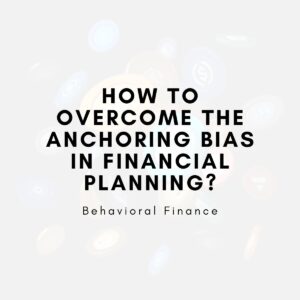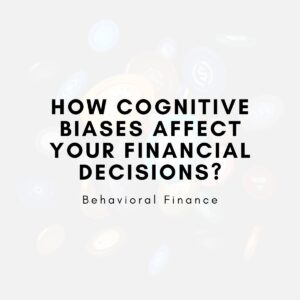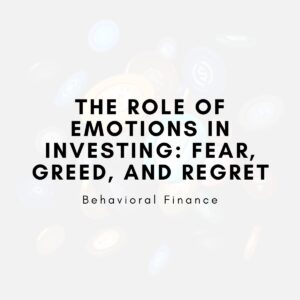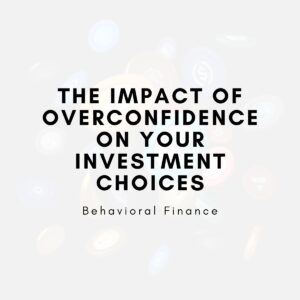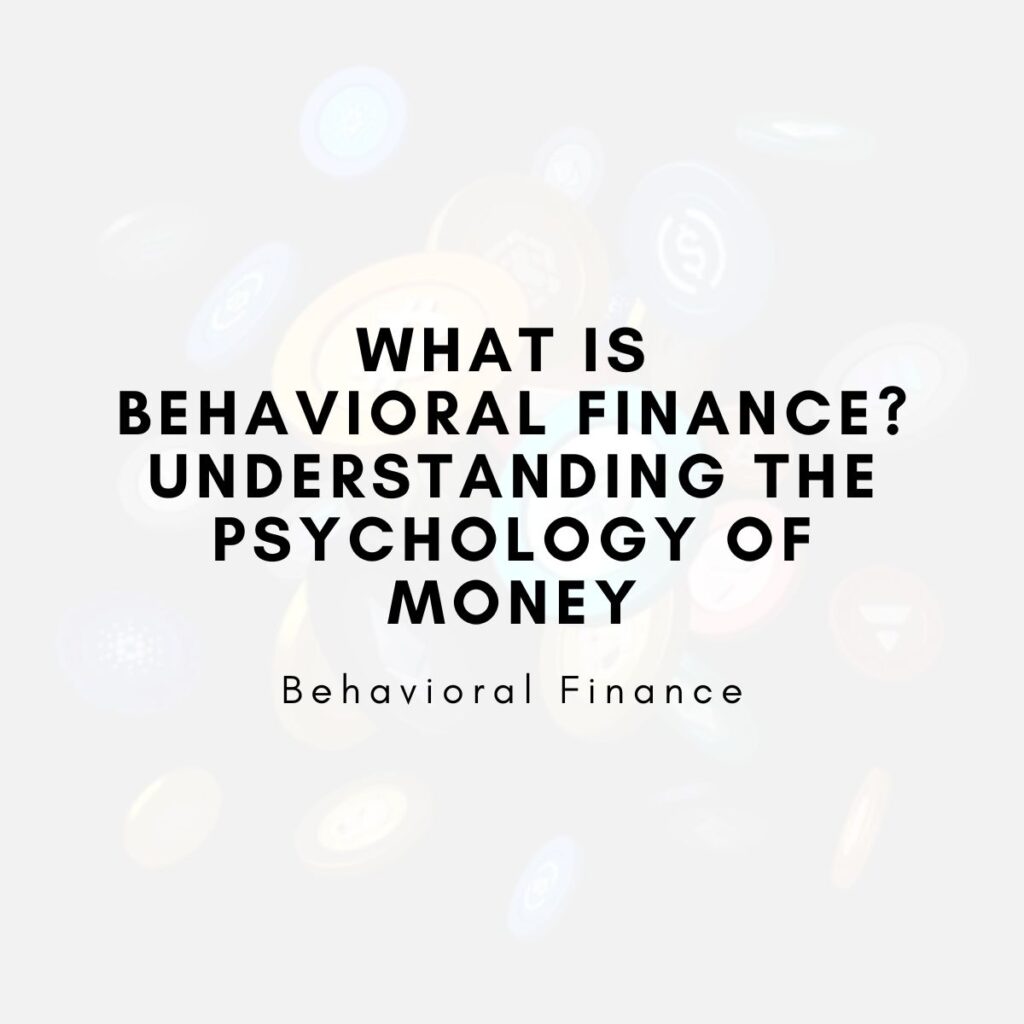
What is behavioral finance, and why does it matter?
Behavioral finance is a field that explores the psychological and emotional factors influencing financial decisions. Unlike traditional finance, which assumes people make rational choices, behavioral finance recognizes biases and heuristics that can lead to irrational decisions. Understanding these factors helps individuals and organizations make more informed financial choices.
Summary Table: Key Concepts of Behavioral Finance
| Concept | Description | Example |
|---|---|---|
| Behavioral Finance | The study of how psychological factors and emotions influence financial decision-making. | People buying into a market bubble due to herd behavior or FOMO. |
| Cognitive Biases | Systematic errors in thinking that lead to irrational financial decisions. | An investor might avoid selling a losing stock due to anchoring bias on its original purchase price. |
| Emotional Factors | Emotions such as fear, greed, or regret that cloud rational financial judgment. | Fear of missing out (FOMO) pushes individuals to buy overpriced stocks during a market boom. |
| Heuristics | Mental shortcuts used for quick decisions, which can sometimes lead to errors. | Investing in a trending stock without analyzing its fundamentals due to its high visibility. |
| Loss Aversion | A tendency to fear losses more than valuing equivalent gains, leading to overly cautious decisions. | Choosing a guaranteed $50 over a 50% chance to win $100. |
| Confirmation Bias | Seeking information that supports existing beliefs while ignoring contradictory evidence. | Ignoring negative news about a company you’ve invested in while only focusing on positive reports. |
| Mental Accounting | Treating money differently based on its source or intended use, often leading to poor financial choices. | Splurging a tax refund on luxuries while saving regular income. |
| Endowment Effect | Overvaluing possessions simply because they are owned, regardless of their market worth. | Refusing to sell a collectible at market price due to sentimental attachment. |
| Herd Behavior | Following the actions of others, especially during market booms or crashes, without independent analysis. | Selling stocks during a market crash just because others are doing the same. |
| Strategies to Overcome Biases | Practical steps to mitigate the impact of biases and emotions on financial decisions. | Seeking financial advice, using data-driven planning, and pausing before major decisions. |
This table provides an overview of key behavioral finance concepts, their definitions, and real-world examples to help individuals better understand the psychology behind financial decisions.
Introduction
Financial decisions aren’t always logical. Whether it’s overspending during a sale or holding onto a poorly performing stock due to emotional attachment, human behavior often contradicts traditional economic theories. Behavioral finance bridges the gap between psychology and finance, explaining why people make certain financial decisions and how biases and emotions influence outcomes.
By exploring behavioral finance, individuals can identify their financial habits, correct irrational tendencies, and make smarter money choices. This guide delves into the principles of behavioral finance, common biases, and practical strategies for overcoming them.
What Is Behavioral Finance?
Behavioral finance studies the psychological factors and biases that influence financial behaviors. Unlike traditional finance, which assumes rationality in decision-making, behavioral finance acknowledges that people often act irrationally due to emotions, social influences, and cognitive errors.
The Foundations of Behavioral Finance
Behavioral finance emerged in the late 20th century, driven by psychologists like Daniel Kahneman and Amos Tversky. Their groundbreaking research on decision-making under uncertainty highlighted how biases skew rational thinking, leading to poor financial outcomes.
Example: A person might sell a winning investment too early due to fear of loss but hold onto a losing one, hoping it will recover—a phenomenon known as the “disposition effect.”
Behavioral Finance vs. Traditional Finance
While traditional finance relies on models like the Efficient Market Hypothesis (EMH), behavioral finance challenges these assumptions, highlighting real-world behaviors that deviate from theory.
Key Concepts in Behavioral Finance
Understanding behavioral finance requires exploring its core concepts, including biases, heuristics, and the psychology of money.
1. Cognitive Biases
Cognitive biases are systematic errors in thinking that affect decision-making. Common biases include:
- Overconfidence Bias: Believing you’re better at financial decisions than you actually are.
- Anchoring Bias: Relying too heavily on initial information (e.g., a stock’s past price) when making decisions.
- Herd Behavior: Following others’ actions, such as panic selling during a market crash.
Example: An investor might overestimate their ability to predict market trends, leading to risky investments.
2. Emotional Factors
Emotions like fear, greed, and regret heavily influence financial behavior.
- Fear of Missing Out (FOMO): Jumping into investments due to peer pressure or hype.
- Loss Aversion: Feeling the pain of losses more intensely than the joy of gains, leading to overly cautious decisions.
Example: During a market boom, fear of missing out might push an individual to buy overvalued stocks.
3. Heuristics
Heuristics are mental shortcuts used to make quick decisions, which can lead to errors.
- Availability Heuristic: Making decisions based on readily available information, even if it’s incomplete.
- Representativeness Heuristic: Assuming past patterns will repeat, such as believing a consistently rising stock will never fall.
Example: Investing in a trending stock without researching fundamentals due to its high visibility in the news.
Behavioral Finance in Everyday Life
Behavioral finance isn’t limited to the stock market; it impacts daily money decisions.
Spending Habits
People often overspend due to marketing tactics and psychological triggers, like discounts or urgency (“limited-time offer”).
Example: Buying unnecessary items during a sale because the price feels too good to pass up.
Saving and Investing
Emotional attachment and biases can affect saving and investing strategies.
- Status Quo Bias: Preferring to stick with current financial habits rather than seeking better options.
- Mental Accounting: Treating money differently based on its source, such as spending a tax refund more frivolously than a paycheck.
Example: A person might avoid switching to a higher-interest savings account due to inertia.
Common Behavioral Finance Biases
Understanding specific biases can help identify irrational behaviors and mitigate their impact.
Loss Aversion
People fear losses more than they value equivalent gains.
Example: Choosing a guaranteed $50 over a 50% chance to win $100 reflects loss-averse behavior.
Confirmation Bias
Seeking information that supports existing beliefs while ignoring contradictory data.
Example: An investor might focus on positive news about a company while dismissing negative reports.
Endowment Effect
Valuing owned items more than their market worth.
Example: Refusing to sell a collectible at its market price because of sentimental value.
Strategies to Overcome Behavioral Biases
Behavioral biases can’t be eliminated entirely, but recognizing and managing them improves financial outcomes.
1. Increase Awareness
Educate yourself about common biases and how they manifest in financial decisions.
Example: Read books like Thinking, Fast and Slow by Daniel Kahneman to understand cognitive errors.
2. Use Data and Planning
Base decisions on data rather than emotions. Create a financial plan to stay focused on long-term goals.
Example: Set automatic contributions to a retirement account to avoid reactive spending.
3. Seek Professional Advice
Financial advisors provide objective perspectives and can counter emotional decision-making.
Example: A financial advisor might discourage selling investments during a temporary market dip.
4. Pause Before Acting
Take time to assess decisions rather than acting impulsively.
Example: Wait 24 hours before making a major purchase to evaluate its necessity.
The Role of Behavioral Finance in Financial Education
Incorporating behavioral finance into financial education fosters better decision-making and financial well-being.
Encouraging Mindful Spending
Teaching individuals to recognize emotional triggers and resist impulsive buying.
Example: Budgeting apps like Mint help track spending patterns and identify unnecessary expenses.
Promoting Long-Term Thinking
Encouraging goal-setting and long-term planning over short-term gratification.
Example: Use visuals like savings charts to track progress toward major financial goals, such as buying a house.
Conclusion
Behavioral finance reveals the complex interplay between psychology and money, offering insights into why we make certain financial decisions. By understanding biases, heuristics, and emotional triggers, individuals can make more rational choices and improve their financial outcomes. Whether you’re investing, saving, or budgeting, applying behavioral finance principles helps overcome irrational tendencies and build a stronger financial future.
Key Takeaways
- Behavioral finance explores how psychological factors influence financial decisions.
- Common biases include loss aversion, overconfidence, and herd behavior.
- Emotions like fear and greed can lead to irrational money choices.
- Strategies to overcome biases include increasing awareness, using data, and seeking professional advice.
- Incorporating behavioral finance into financial education promotes better decision-making.

